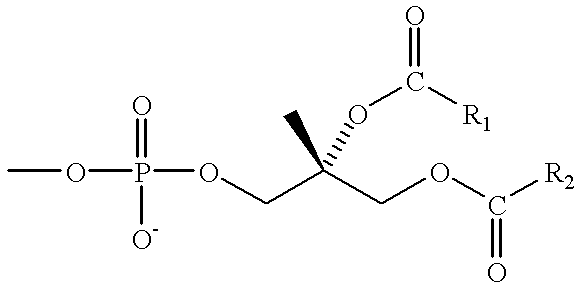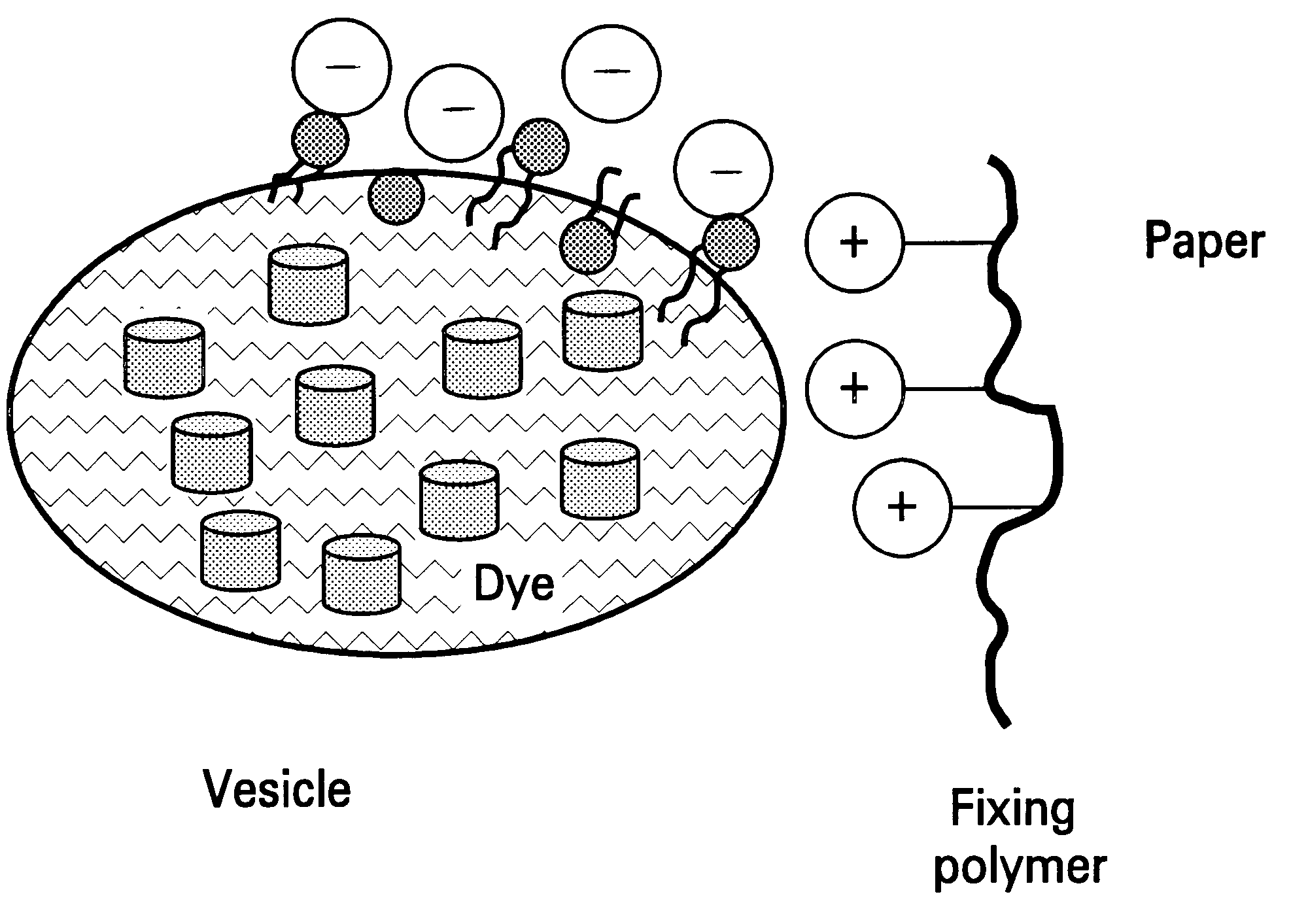Increasing chroma and edge acuity of dye-based inks by underprinting using vesicle technique
- Summary
- Abstract
- Description
- Claims
- Application Information
AI Technical Summary
Benefits of technology
Problems solved by technology
Method used
Image
Examples
example 1
Ink and Fixer Preparation
Ink preparation included the following stages.
1. Preparation of 500 g ink concentrates for each color, containing co-solvents, dyes, buffer and an antimicrobe agent.
2. Addition of 15 g of vesicle-forming surfactant and pre-mixing with a T25 Ultratorrax (Janke & Kunkel, IKA Labortechnik)) for 10 minutes. Typical vesicle size after mixing was about 1,000 nm, and the inks were quite turbid, in particular yellow inks, which had a characteristic "orange juice" appearance.
3. High-pressure homogenization with an APV Rannie homogenizer at 14,000 psi for six passes; the inks were cooled by a coil placed in a water bath. The flow rate of the homogenizer was 30 ml / min. After homogenization, the inks were no longer turbid, but slightly opalescent.
4. Addition of the solution of polymeric binder and spreading agent and final mixing
Fixers were prepared by direct mixing of the components. Preferably, polyethylene imine, succinic acid, and water are mixed first, and then all...
example 2
Ink and Fixer Compositions
Some typical ink compositions are shown in Tables IV-X. The fixer compositions are shown in Tables XI-XIIa. The amounts of dyes in the in the compositions are shown in terms of optical densities at characteristic wavelengths at 1:10,000 dilution.
TABLE V
TABLE IV
TABLE VII
TABLE VIII
TABLE IX
TABLE IX
TABLE XI
TABLE XI
example 3
Typical Physical Properties of the Inks and the Fixer
Tables XIII and XIV show the physical properties of Inks #1, Fixer #1, and Fixer #2. The viscosity was measured by a Brookfield viscometer at 60 rpm. The surface tension was measured by a K10ST Kruss Tensiometer by the plate method. The particle size was measured by a Nicomp particle size analyzer (Particle Sizing Systems, Inc., Santa Barbara, Calif., USA) at 90.degree. scattering angle and .about.1:10000 dilution by water in vesicle mode. The measurement of particle size of magenta inks by dynamic light scattering was not possible because of the dye fluorescence. It can be expected that the size is similar to cyan because the ink vehicles of magenta and cyan are identical.
TABLE XIII
PUM
| Property | Measurement | Unit |
|---|---|---|
| Solubility (ppm) | aaaaa | aaaaa |
| Temperature | aaaaa | aaaaa |
| Temperature | aaaaa | aaaaa |
Abstract
Description
Claims
Application Information
 Login to View More
Login to View More - R&D
- Intellectual Property
- Life Sciences
- Materials
- Tech Scout
- Unparalleled Data Quality
- Higher Quality Content
- 60% Fewer Hallucinations
Browse by: Latest US Patents, China's latest patents, Technical Efficacy Thesaurus, Application Domain, Technology Topic, Popular Technical Reports.
© 2025 PatSnap. All rights reserved.Legal|Privacy policy|Modern Slavery Act Transparency Statement|Sitemap|About US| Contact US: help@patsnap.com



